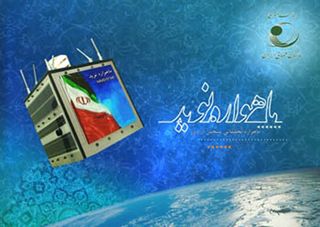Iran to Try Launching Monkey Into Space Again: Report

Iranian space officials announced they will make another attempt to launch a live monkey into space within the next month, according to news reports.
"Testing phase of these living capsules has ended and monkeys to be sent to space are now in quarantine," Hamid Fazeli, head of the Iranian Space Agency, was quoted as saying by the country's Mehr News Agency on Tuesday (Jan. 15).
"These monkeys will be sent into space according to a timetable on Fajr Ceremonies," Fazeli said, referring to a 10-day period in the beginning of February when the Iranian Revolution is commemorated. He added that the capsule is called Pishgam, which means "pioneer" in Farsi.
Iran apparently failed in a 2011 effort to launch a live monkey into space. News reports out of the country at that time did not explain what went wrong, but the plan had been to send a rhesus monkey into orbit atop a Kavoshgar-5 rocket.
A successful mission this time around would seem to advance Iran's goal of sending a human into space by 2020 and an astronaut on the moon by 2025.
"Monkeys have similarities to humans, so with them in space, we can examine human factors in space," Fazeli told Mehr News.
Iran has made progress in spaceflight technology in recent years. The country sent its first domestically built satellite into space in February 2009 and launched a Kavoshagar-3 rocket in 2010 that delivered a rat, two turtles and a worm into space. Iran also sent Earth-observing satellites into orbit in 2011 and 2012.
Sign up for the Live Science daily newsletter now
Get the world’s most fascinating discoveries delivered straight to your inbox.
Western critics have expressed concern over the potential military applications of Iran's rocket program since boosters developed to reach space could also be used as long-range ballistic missiles. The Islamic republic has denied such ambitions for its space program.
In the early days of spaceflight for the United States and Soviet Union, animals were used to test the safety and feasibility of launching a living being into space and bringing it back unharmed.
A rhesus monkey named Albert I was the first ever monkey astronaut. It was launched aboard a U.S. military V-2 rocket from White Sands, New Mexico, in June 1948 but suffocated and died during the flight. A monkey named Yorick was the first monkey to live through a space flight. Yorick and 11 mice were recovered after an Aerobee missile flight of 236,000 feet at Holloman Air Force Base, New Mexico, in September 1951.
This story was provided by SPACE.com, a sister site to Live Science. Follow SPACE.com on Twitter @Spacedotcom. We're also on Facebook and Google+.


